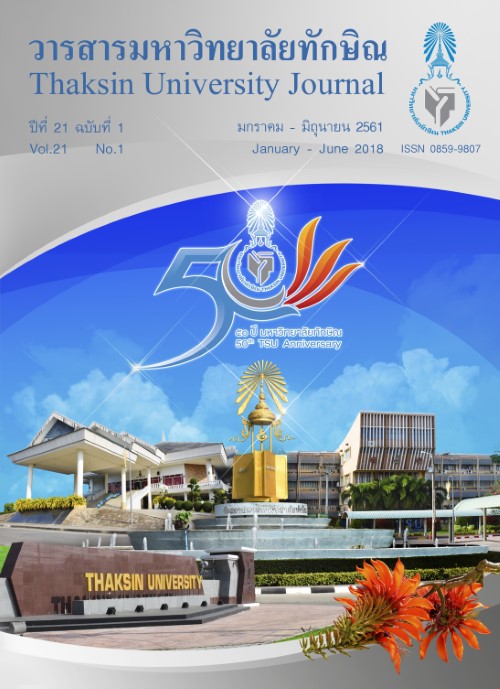Present Status of Sago Plam (Metroxylon sagu) in Yala, Pattani and Narathiwat
Main Article Content
Abstract
Sago palm was a very valuable plant, but current growing situation is not well known. Consequently,
study on growth state, quantity and situation of sago were studied and performed. The research method was
consisted of observation, interrogation, interview, and focus group with people in Yala, Pattani and Narathiwat
, totally 199 sub-districts. The data gathering were analyzed, and presented as percentage. The results revealed
that sago palm (Metroxylon sagu Rottb.) grew in the swampy without drainage or waterlogged some period in
a year. Sago palm can be grown in rock area and can grow with other trees both in large and small sizes. In
comparison with three provinces, the Narathiwat, 1,028,393 m2 (70.89%) and 45,605 trees (77.33%). The 82.50%
of sago palm forest in Yala, Pattani, and Narathiwat was ownership area, other than 17.50% was public area. The
72.25% of sago palm forest was abundantly. Thus, people in the area as well as those involved how to conservation
ways sago palm forest to be sustainable for the next generation.
Article Details

This work is licensed under a Creative Commons Attribution-NonCommercial-NoDerivatives 4.0 International License.
References
Reference and Selection Guide Version 4.0. Retrieved January 7, 2017, from http://www.
worldagroforestry.org/treedb2/AFTPDFS/ Metroxylon_sagu.pdf.
[2] Markphan, W., Chankaew, S. and Tiprug, U. (2016). “An Economic Evaluation of the Direct Use of Sago
Palm in Phatthalung Province and Trang Province”, Thaksin University Journal. 19(2), 99-108.
[3] Chanjula, P. (1999). “Sago Palm : the Interesting Local Plant in the South”, Journal of Agriculture. 17(2),
213-221.
[4] Sukjuntra, J. (2016). "Development of Traditional Food from Sago Starch : Frozen Palaw Keropok", Burapha
Science Journal. 21(2), 17-30.
[5] Kaewtathip, W., Chantarattana, R., Chankaew, N., Wutthiwong, V. and Chinworakomol, A. (2015).
Distribution and Utilization of Sago Forest in Southern Thailand: Yala, Narathiwas and Pattani.
Research Report of Yala Rajabhat University.
[6] Ehara, H., Susanto, S., Mizota, C., Hirose, S. and Matsuno, T. (2000). “Sago Palm (Metroxylon Sagu,
Arecaceae) Production in The Eastern Archipelago of Indonesia: Variation in Morphological
Characteristics and Pith Dry-Matter Yield”, Economic Botany. 54(2), 197-206.
[7] Nozaki, K., Nuyim, T., Shinano, T., Hamada, S., Ito, H., Matsui, H. and Osaki, M. (2004). “Starch Properties
of the Sago Palm (Metroxylon sagu Rottb.) in Different Soils”, Plant Foods for Human Nutrition.
59. 85–92.
[8] Flach, M. (2017). Sago Palm. International Plant Genetic Resources Institute. Retrieved March 7, 2017,
from http://edepot.wur.nl/309044.

